|
|
By Sandy, on June 14th, 2010
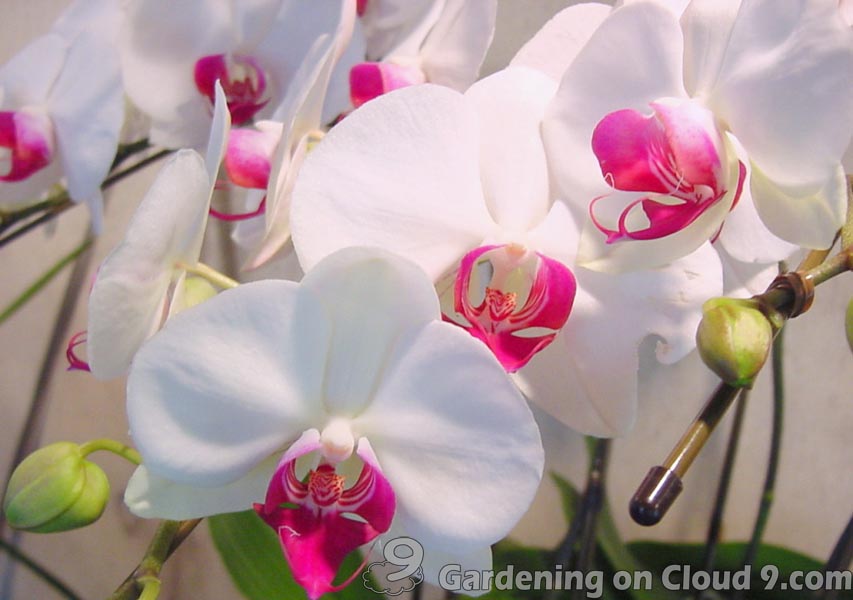
Phalaenopsis orchids are very suitable for city dwellers who have limited space and no gardens. Since Phalaenopsis orchid is quite easy to grow and generally likes the light and temperature condition of our homes, it is an excellent choice for the first time orchid growers, as well as indoor gardeners.
Below . . . → Read More: How to Grow and Care for Phalaenopsis Orchids
By Sandy, on May 20th, 2010
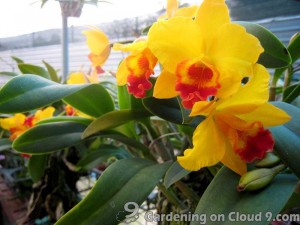 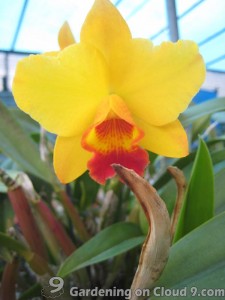
Cattleya orchids are among the most beautiful and satisfying of all orchid species to grow and care for. Since the care of Cattleya orchid is easy, gardening beginners who are interested in growing orchids but haven’t had any experience before, can start with Cattleya orchid. With simple growing conditions, most of us can obtain outstanding results.
And here, let me share with you what I have learned about Cattleya orchids.
Light
The growing area of Cattleya orchids needs to be covered with 50-60% shade cloth. If the light is too strong, the leaves of the Cattleya orchids will be burned. On the other hand, if the light is too weak, the plant will be very weak, and won’t blossom.
Continue reading How to Grow and Care for Cattleya Orchids
By Sandy, on May 3rd, 2010
Deciduous Dendrobium orchids are peculiar-looking plants. Before the orchid enters its dormancy, it will get dry and shrivel, showing its bamboo-like canes after all its leaves have dropped off. And amazingly, and lovelier by contrast, the orchid flowers bud and bloom from the nodes of these day canes once the orchid has come out from its dormancy.
And after sharing what I know about Cattleya orchids, let me share what I know about Dendrobium orchids here.
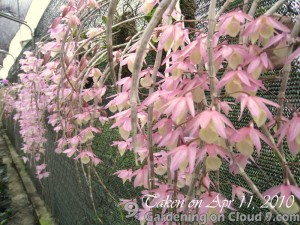 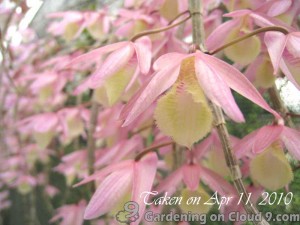
Continue reading How to Grow and Care for Dendrobium Orchids
By Sandy, on March 25th, 2010
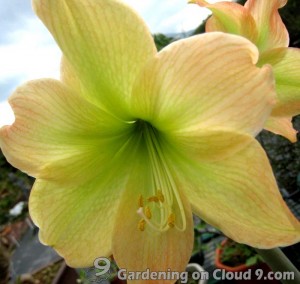
Hippeastrum (aka Barbados Lily, 朱頂蘭 in Chinese) is often been mistaken as Amaryllis.
Hippeastrum is a hardy plant. The flowers of Hippeastrum are red and pink and often striped with various amounts of white. Some hippeastrums have yellow, white, orange or pale green flowers. The flowers only appear for 2-3 weeks and they are unscented. With large rewards of big and beautiful flowers for little efforts, I always enjoy growing Hippeastrums. Continue reading Growing Hippeastrum
By Sandy, on March 15th, 2010
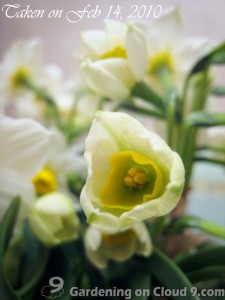 Chinese love to decorate their homes with Narcissus (Chinese Sacred Lily in particular) during Chinese New Year. The beautiful white Narcissus flowers with orange cups blossom around 7-14 days, and when they bloom, they send out a very sweet fragrance. Chinese love to decorate their homes with Narcissus (Chinese Sacred Lily in particular) during Chinese New Year. The beautiful white Narcissus flowers with orange cups blossom around 7-14 days, and when they bloom, they send out a very sweet fragrance.
Continue reading Have Our Narcissus Blossoms at the Right Time
By Sandy, on February 15th, 2010
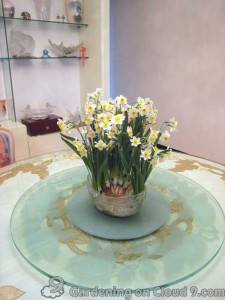 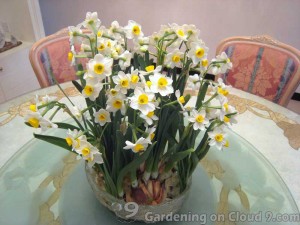
Since Narcissus flower blooms around lunar January, it is one of the most associated flowers with the Chinese New Year. The Chinese like to decorate their homes with this beautiful white Narcissus flower and wait in anticipation of its blossom, which symbolizes good luck and prosperity for the coming year. In addition, Narcissus has one of the sweetest fragrances! Continue reading Narcissus Blossom – An Important Symbol in Chinese New Year
By Sandy, on January 8th, 2010
Have you ever bought a Spider Plant (aka Airplane Plant, botanical name: Chlorophytum comosum) that just never grows “baby spiders”, or runners, no matter how well you take care of it? Instead of questioning your method of watering or fertilizing your Spider Plant, may be first of all, you should examine your plant and check whether or not it really is a Spider Plant! Because instead of a Spider Plant, it could be a Bichetii Grass.
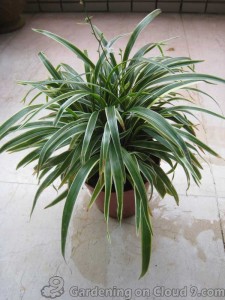
Bichetii Grass (aka False Lily Turf, Siam Lily, botanical name: Chlorophytum bichetii) is in the same genus as Spider Plant, a very common variegated form of Chlorophytum laxum. Continue reading Is It Really a Spider Plant? Or a Bichetii Grass?
By Sandy, on September 17th, 2009
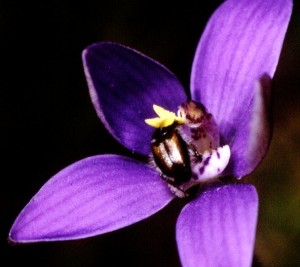
We, women, sometimes complain that men only care about food and sex but nothing else (okay, also football games and gadgets). While it can be quite frustrating and disappointing sometimes, we can also try to be more sympathetic, and understand that these poor guys can really do nothing but try to meet their human biological needs. Food, sex, water and air are the four very basic biological needs that the survival of human race will become impossible if any one of these needs is not met.
It is just part of the nature. All animals know these biological needs, as well as all insects. And apparently, even orchids know this very well too. Indeed, the orchids understand this so well that the plants use these biological needs to lure different insects to work for them for free! Continue reading It’s Always about Food & Sex
By Sandy, on July 18th, 2009
Recently, I have noticed that my Episcia (aka Flame Violet) often folds up its top pair of leaves when the night comes. The leaves are near the horizontal during the day and close to the vertical at night. And while sometimes the pair of leaves moves just slightly, pointing to the ceiling, there are times the leaves fold up so tightly, sticking against each other with hardly any gap in between.
As ignorant as I may sound, at first, I suspected that this movement of the leaves of my Episcia was due to insufficient sunlight (it had been rainy and gloomy for over a week). So, to keep my Episcia “open” at night, I put my plant under artificial light for around 14 hours per day for several days. However, the artificial light didn’t help at all. The top pair of leaves closes at night regardless of the amount of light there is during the day.
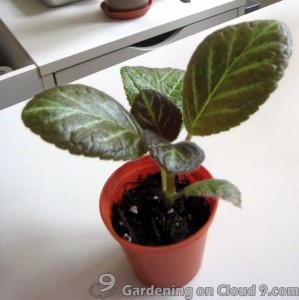 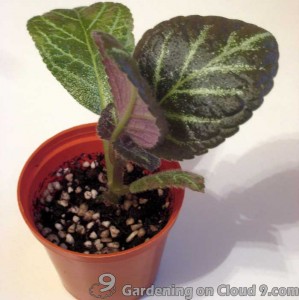
My baby Flame Violet, which I have propagated a while ago, also has its own circadian rhythms.
Continue reading Our Plants Need to Sleep Too!
By Sandy, on June 29th, 2009
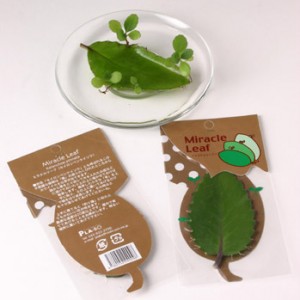
A few weeks ago, I saw a nicely packaged leaf called Miracle Leaf in the Life Division of CitySuper, an upscale supermarket in Hong Kong. It is selling for HKD $25 (around USD $3.5). At the back of the package, it says
Baby leaves come out from the narrow parts of the MOTHER leaf.
Put the leaf on the water or on the soil.
Treat well and small bellflowers come out. Suitable temperature is over 20 centigrade.
Place the plant in a warm well-lit place.
Continue reading Miracle Leaf – Kalanchoe Pinnata
|
|

















Recent Comments